Location of Golden Temple
Amritsar is a major city in North India famous for the Golden Temple It lies in the north Indian state of Punjab. It’s not very far from the International border with Pakistan. The literal meaning of Amritsar is ”Pool of celestial nectar”, Amritsar has an international airport, it is very well connected with other Indian cities and there are some international flights directly landing on to the Amritsar airport. The city is very well connected with other north Indian cities via a network of excellent highways and India railway network. Amritsar is at a distance of 140 km from Ludhiana and 450 km from Delhi. The Golden Shatabdi express from New Delhi takes around 7 hours to travel between New Delhi to Amritsar railway station.
History-
The Fourth Sikh master(Guru sahib) Sri Guru Ram Dass started developing a new city near the village of Tunga, it was named Chakk Ramdass Pur. There are two theories about the acquisition of land for this new city.
1-People say the land was bought for 700 Rs from the village of Tunga.
2-Emperor Akbar had visited the congregation of Third master(Guru sahib) Sri Guru Amar Dass Ji at Goindwal and was very pleased to see the working and ethos of Sikh principles. It is said Emperor Akbar had Food from the community kitchen sitting with common folks and disciples. Some people say Akbar donated the land for the new proposed city.
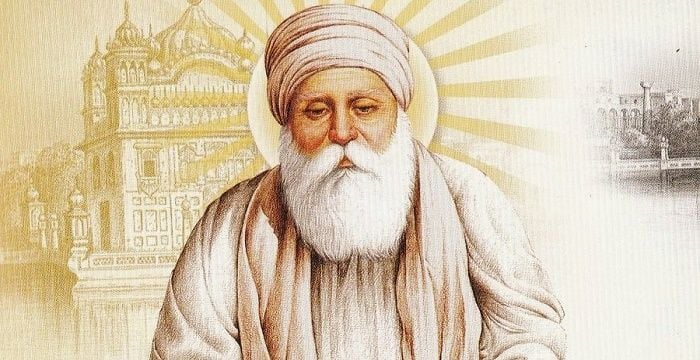
The site for the new temple was selected, this site is said to be an old pool which was known to have magical curative prowess. There is a very old tale of a lady “Bibi Rajni” whose husband a leper was cured of this dreaded disease by simply having a bath in this pool. Guru Ramdass ji started the construction of this pool. The construction started in 1577 and was completed in 1589. Guru Ramdass Ji left for his celestial abode in 1581. Guru Arjan dev his successor and the fifth master(Guru Sahib) of the Sikh faith completed the pool and started construction of the new Sikh temple, The foundation stone of the temple was laid by a Sufi saint Mian Meer. The temple was named as “Hari Mandir” the temple of Lord Hari. On its completion in 1604, the Adi Granth sahib was placed in the sanctum sanctorum, Baba Buddha sahib was authored by the First Gyani.
Suggested Tour Packages :-
- India Tour Packages
- Rajasthan Tour Packages
- Varanasi Tour Packages
- Delhi Tour Packages
- Golden Triangle Tour Packages
- One Day Trip from Delhi
- Taj Mahal Tour Packages
- Golden Triangle Tour With Amritsar
Emperor Jehangir in his autobiography wrote about the Sikh movement and vowed to put an end to it. Guru Arjan Dev Ji was martyred in the city of Lahore as he refused to embrace Islam. This incident was the turning point of this very peaceful spiritual movement. The sixth Guru Har Gobind Ji ordered the Sikh to be a saint soldier, he himself carried two swords one signifying the temporal authority and the other representing the spiritual authority. He started the construction of Akaal Takht sahib a seat of temporal authority, Akal Takht is the highest court of the Sikh religion. After the sixth Guru sahib, the Harimandir sahib fell into the hands of people who were not friendly with the Sikh masters they didn’t even allow the Ninth master Guru Tegh bahadur sahib to enter the precincts of the temple, A gurudwara inside the temple complex reminds of this event. Guru Gobind Singh the tenth master again took control of this temple.
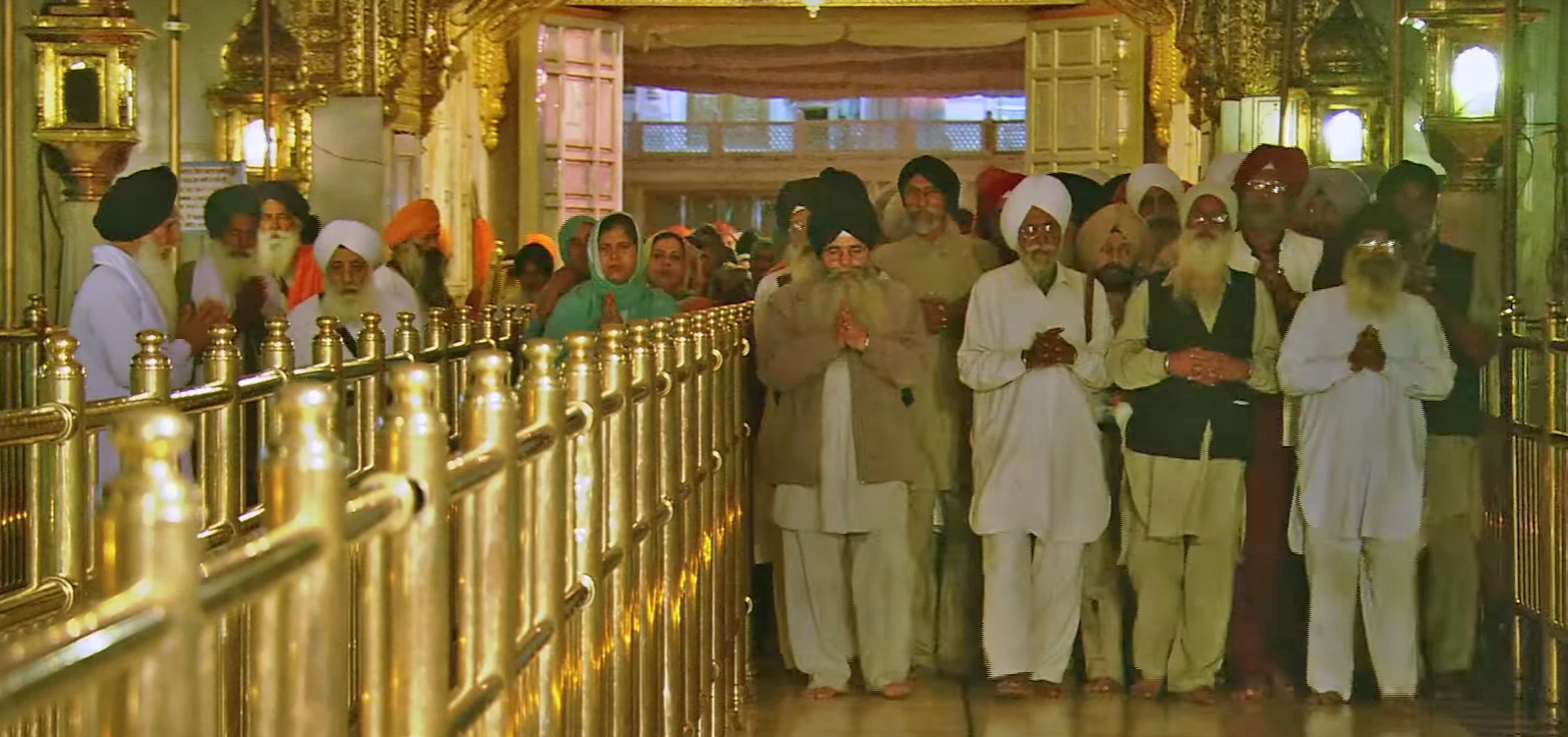
For the coming 200 years, the temple was witness to a vicious struggle of the Sikhs with Mughals and Afghan invaders resulting in repeated demolitions of the temple complex. Ahmad Shah Abdali destroyed the temple twice in 1757 and 1762. Finally, as the Sikh Maharaj Ranjit Singh laid the foundation of the Sikh empire he rebuilt the temple complex in 1809, Maharaja gave the world-famous look to the Harimandir sahib as he guided the temple with 400 kgs of Gold plates on the copper plates thus the name Golden temple came into existence. White marble has also been extensively used in architecture. some historians say the mausoleum of emperor Jehangir in Lahore was partly demolished and the marble screens were used in the construction of the Golden temple this was a kind of revenge on the Mughal emperor who had ordered the martyrdom of the Fifth master.
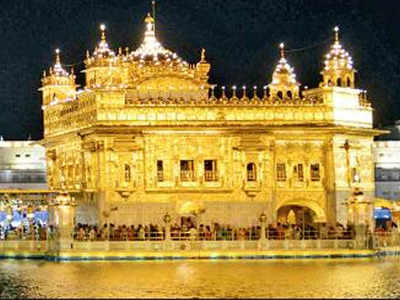
Sikh philosophy and Golden temple– India in the sixteenth century was a land of turmoil that Indian society was reeling under its own weight. The caste system had completely divided society. The social ills like “Sati” were prevalent, there was a prevalent animosity between the Hindu and the Muslims. Sikh religion started by Guru Nanak dev Ji came as a heavenly respite, he raised a voice against the atrocities of Mughal emperor Babur, he brought the Hindus and Muslims together, his new philosophy completely rejected the caste system and other social evils like “Sati” he preached on the gender equality. The Sikh philosophy relied on these principles-
- Naam Japo ( Constantly recite the lord’s holy name)
- Kirat Karo (Earn livelihood through righteous means)
- Wand Chako (Share your righteous earning with the underprivileged)
- Naam is the recitation of the holy name of the lord almighty as a mantra imparted to the Sikh by the Guru. The disciple is supposed to continuously recite the holy name.
- Kirat means the livelihood, a Sikh is supposed to earn his livelihood through righteous means and raise his family using the same. A Sikh is supposed to be a householder.
- Sikh enjoys the virtues of his rightfully earned livelihood and shares it with other fellow human beings.
- Read More blog:- Why Delhi Agra Jaipur Tour is best India tour?
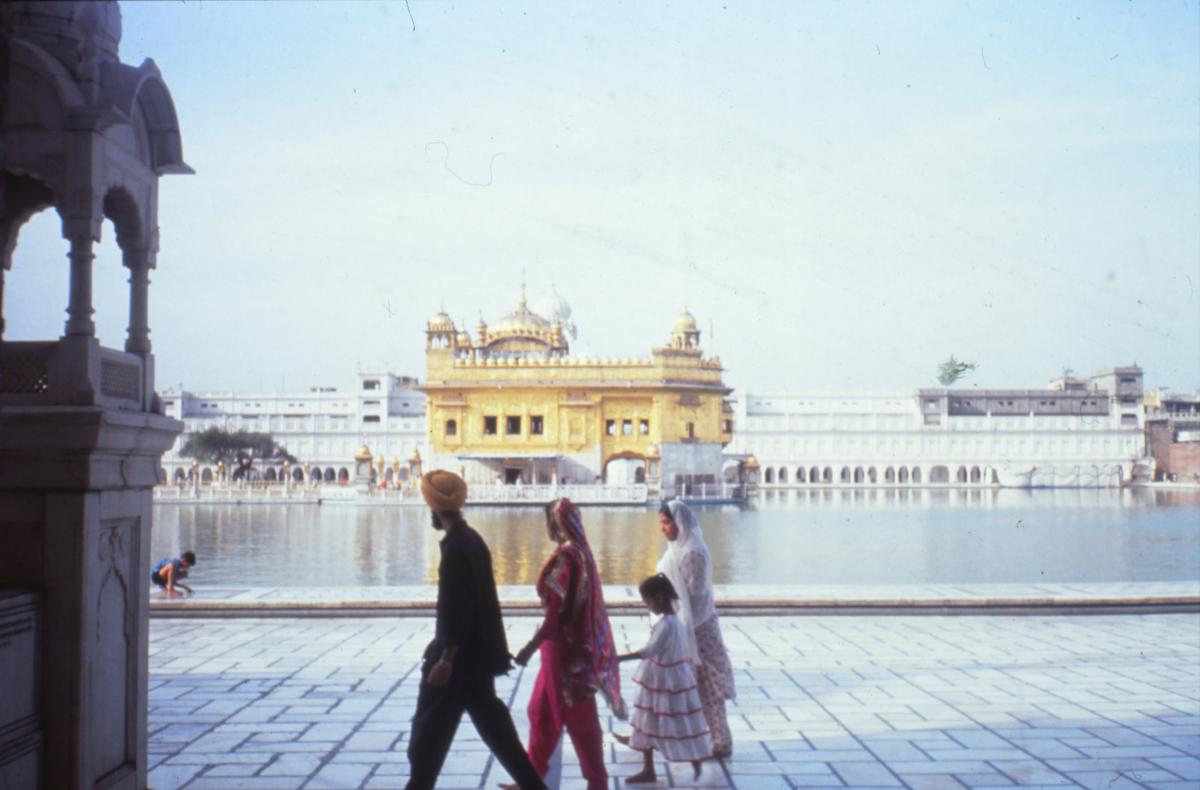
Guru Amardass gave the mantra of “Pangat and Sangat” meaning a disciple has to first sit and eat food prepared in a community kitchen eating with all other fellow humans thus negating the concept of caste system in totality. The food is nourishment for the body, after getting nourishment for body a disciple is expected to attend the congregation of the Guru and listen to the celestial Gurubani sung in classical ragas. This was food for the spirit, both are taken special care even now at the Harimandir sahib here Gurbani kirtan happens uninterrupted for entire day and the community kitchen (Langar) serves food to all disciples coming to the darbar of the Guru. Before enjoying these heavenly virtues a devotee is expected to first cleanse his body by taking a dip in the sarovar (pool) and clean his karma along with his body. Guru Ajan Dev ji called Harimandir as “Athsath teerth”( there are supposed to be 68 places of pilgrimage in Hindu ideology) a bath at Harimandir sahib gives the devotee the fruit of bathing at all these 68 places of pilgrimage altogether.

The concept of live Guru was stopped by the order of the tenth master Guru Gobind Singh who before leaving this etheral world ordered the congregation to revere the Sri Guru Granth sahib a compilation of the bani (hymns) of Sikh masters and Hindu and Muslim saints together as a live Guru.
Since then Sri Guru Granth Shib is treated as a live Guru and his orders are read out from Harimandir sahib daily.
Architecture-
Very recently the state government of Punjab completed its famous corridor project around the Golden temple, many old structures like a huge water tank have been razed and demolished. The crossing in front of the temple has been amalgamated into the complex and special beautification drive has been carried on. The construction has happened as a continuous process. The temple has four gates, this was a concept to show the world that it was open to everyone regardless of caste creed and religion. Even the foundation stone of the temple is said to be laid by a Muslim saint Sain Miyan Meer.
From the main entrance as you approach the temple you have to take a flight of steps down, this was also done deliberately. On way to the God, humility is a key factor. this has been added as an architectural phenomenon. As you go down the steps the man made pool almost a perfect square has the shining Golden temple on one side. The devotees do a circumambulation of the pool in clockwise manner till they reach “Darshini dyodhi”. This is the entrance gate to the temple connected via a small bridge on the pool. The gate has been decorated with period paintings, the bridge is always crowded by the devotees who wait patiently to pay their homage to the Guru sahib.The temple is a two storied structure with dome on the top, the top story is all guilded with gold while the lower story is decked with marble. The gold has been plated on the copper plates. Very recently in 1990’s a renovation project was carried over and fresh gold plating was done more than 500 kg of gold was used in the process. The gold is 24 carrat and shines charismatically leaving the visitors spell bound. Nowhere you will come across such a huge structure all covered in gold it’s a marvel.
The design is an amalgamation of Hindu and Islamic style of architecture. The verses of Sri Guru Granth Sahib have been inscribed on the insides of the arches. The inside hall has the congregation of Sri Guru Granth Sahib seated on a slightly elevated platform with a beautiful embroidered canopy on the top the bards sing Guruvani in classical Indian music notes and ragas. The devotees bow in reverence right in front of the Guru and silently after wards move out of the hall, the ceiling is all painted in geometric patterns in liquid gold. The design cues have been also taken from other Indian architectural marvels. Pietre Dura(Inlay) work from the Tajmahal has been done resplendently floral patterns along with birds and live figures of humans has been used here these coloured stones and the designs are so intricate that you will be amazed. Narrow steps take you to the upper story where again the holy Sri Guru Granth Sahib is read. The stair case and the walls are all decked up with motifs and paintings in liquid gold now these have been covered in glass panels . Taking a flight of few more steps will lead you to the roof top here the flag insignia of Sikh religion flies high, on one side is a small room with a dome on top, the top finial is in shape of a lotus in bloom.the sides are flanked with rows of small canopies. The view from the top is enthralling.
Ghanta Ghar Chowk-
The main entrance to the Golden temple complex is through the Ghanta ghar chowk, recently this intersection and the adjoining area were revamped by the Government of Punjab, this intersection has been given a swanky new look, the shops and the alleys have been remodeled and redesigned. The name of this intersection comes from a non existent clock tower.This clock tower was made by the British in 1874 at a cost of fifty thousand Rupees it was a towering structure overlooking the Golden temple and in fact was a kind of eye soar. The tower was at close proximity to the Golden temple the architecture was Gothic and didn’t blend with the Indian architecture of the Golden temple. Some historians say the clock tower was made to undermine the Golden temple and perhaps the then Govt planned to make a church in the clock tower near the Golden temple. After independence the clock tower was torn down and now no one knows any thing about the towering structure . Today only the name remains but in other north Indian cities like Ludhiana the clock towers still exist.
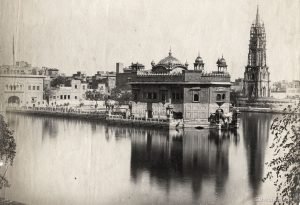
Daily routine at Hari Mandir Sahib-The day starts very early at Hari Mandir Sahib. The clergy get together and the congregation hall is wiped dry(this is called sookhi sewa), All the accouterments from the hall are removed .The entire hall is then washed properly with a mixture of milk and water. Then all the arrangements are redone after drying the hall. This is the start of the preparations for a long day ahead. Sri Guru Granth Sahib is revered as a live Guru, now this is the time to bring the Guru in a palanquin from Akal Takht to the hall in Harimandir sahib where the Guru will bless the congregation for entire day. With utmost care and respect the Granthi after saying a formal prayer carries the Guru sahib to his palanquin. The Ransingha a typical musical instrument used to announce the arrival of Maharajas are sounded the drums are beaten aloud. The devotees so elated to lend a hand to the palanquin of Guru carry the embodiment of live Guru on their shoulders, the prayers have been answered this is the gratefulness of the Guru who has imparted his disciples the service. All the way palanquin is showered with flower petals, the Narsingha keeps on announcing the arrival of Guru sahib. Upon reaching Harimandir sahib Guru takes his seat and the clergy along with disciples makes the first prayer of the day. The first order(Hukam nama) by the Guru sahib is made (this is the order of Guru sahib for all Sikhs everywhere and its revered very highly). This is followed by bards who start singing ASA DI VAAR thus the day begins very early daily at Harimandir sahib you can be part of this heavenly spectacle at the Golden temple Amritsar.
The entire day the chosen bards sing the sacred hymns of the Gurbaani in classical Indian notes. These bards are the best raagis. They are allotted a slot in busy schedule and according to the time allotted they sing and do the service, this continues for the entire day while the public lines up and pays their obeisance to the Guru at the congregation. At the end of the long day Guru sahib bids farewell to his devotees and leaves the congregation hall in a similar procession to that of the morning . At Akal Takht the Guru sahib retires for the night. A long day comes to an end by the blessings of the Guru Sahib.
Suggested Tour Packages :-
- India Tour Packages
- Rajasthan Tour Packages
- Varanasi Tour Packages
- Delhi Tour Packages
- Golden Triangle Tour Packages
- One Day Trip from Delhi
- Taj Mahal Tour Packages
- Golden Triangle with Haridwar & Rishikesh
- Golden Triangle Tour with Ranthambore
Special festivals and Celebrations-
Though all the birthdates of the 10 Sikh Gurus are celebrated at the Harimandir sahib but the birth day of Sri Guru Ramdass is a special occasion, Day of Diwali is another occasion when Harimandir sahib is all decked up with special lights and floral decoration. The Diwali night has thousands of devotees watching a grand display of fireworks.

Community Kitchen –Langar as it id popularly known .All the devotees gather at the building called Langar hall, this is a multi storied building comprising of huge halls on every floor. The devotees before approaching these halls pick up a plate with a spoon and a glass for water,they pour into the halls nicely aligning sitting in straight lines squat on the floor as the volunteers serve freshly prepared dal(green/black lentil) chapatis(fresh pancakes) along with pickle and salad. The food is strictly vegetarian and huge quantities of the same are prepared in the community kitchen with preparations in advance for the entire day serving. A dessert made of rice cooked in milk is served as an icing on the cake. The devotees are not differentiated on any caste or creed or religion basis all the humans receive the blessings of the Guru. This continues throughout the day. Every day more than 50000 devotees eat at this free kitchen at Hari Mandir Sahib. Cleanliness is very well taken care and the cleaning of the hall is done with automatic cleaning machines, again machines are now utilized for making chapatis(pancakes) thousands of chapatis are cooked by these automatic machines.The utensils are at least washed five times before being used again. Any one can be a volunteer and deliver his/her service at the langar hall.
Suggested Tours Plan :-
- Golden Triangle Tour Packages
- One Day Trip from Delhi
- Taj Mahal Tour Packages
- Mathura Vrindavan Tour
- Same Day Jaipur Agra Tour
1:-Jalian Wala Bagh
Location- This memorial is located very near to the Golden temple complex. It takes a two minute walk from the temple gate to reach this memorial.
History- The Bagh means a garden, this infamous garden came into news in 1919 when a British Officer Brigadier General R E H Dyer ordered indiscriminate firing on the congregation of Indian peaceful demonstrators who were protesting peacefully against the then British Indian Government. The garden had only one narrow passage and the same was covered by the firing squad. The protesters could not escape and some jumped into a well inside the garden to save their lives.After India got independent this place was preserved as a memorial of Indian martyrs. Though the exact number of dead can never be exactly known as the then British Indian Government never let the real data out.Some 2000 people including children and women were expected dead in the shoot out, the bullet marks of the shoot out can still be seen on the old walls preserved in glass facade.

2:-India Pakistan Flag lowering parade at wagha border
Location- The International border of India Pakistan runs very close to the city of Amritsar. Located around 30 kms away from Amritsar the border is very well connected to Amritsar city by a four lane highway.The border is used as a transit point for people traveling between these two countries , its also a trade point where import and export goods are exchanged.

Started in 1959 as a beating retreat ceremony ,the flags are lowered and border gates are officially closed for the night Border security force of India and the Pakistani rangers take part in the ceremony,The rising number of tourist and the existing problems between these two nations have transformed this parade into a high voltage display where the fists are pumped and the patriotic songs are sung and the onlookers sneer and swear at the people across the border, The huge crowds show that people enjoy this grand display of military might and patriotism.There is no entrance fees and there are huge galleries for the crowd to sit and enjoy the parade. The seat are available on first come first serve basis so please come in time otherwise you will have to watch the entire episode from the last bench where not much is visible. The timings differ with season. During winter season the parade starts at around 4:00pm while summer it starts at around 5:00pm.
3-Durgiana Temple
Location- This temple is located very near to the Amritsar railway station and just around ane and half kilometer from the Amritsar bus stand.
History and architecture;-According to the belief this is a very old historic site. This is the supposed place of epic Ramayana where the sons of lord Rama after stopping the horse of Ashvamegha yaga tied Hanumana. The present temple dedicated to Goddess Durga was constructed in 1921 by Guru Har Sai Kapoor. This temple resembles the Hari Mandir Sahib(Golden temple). On your Amritsar tour you can also visit this Hindu temple. The temple has dome gilded in gold and silver gilded doors.



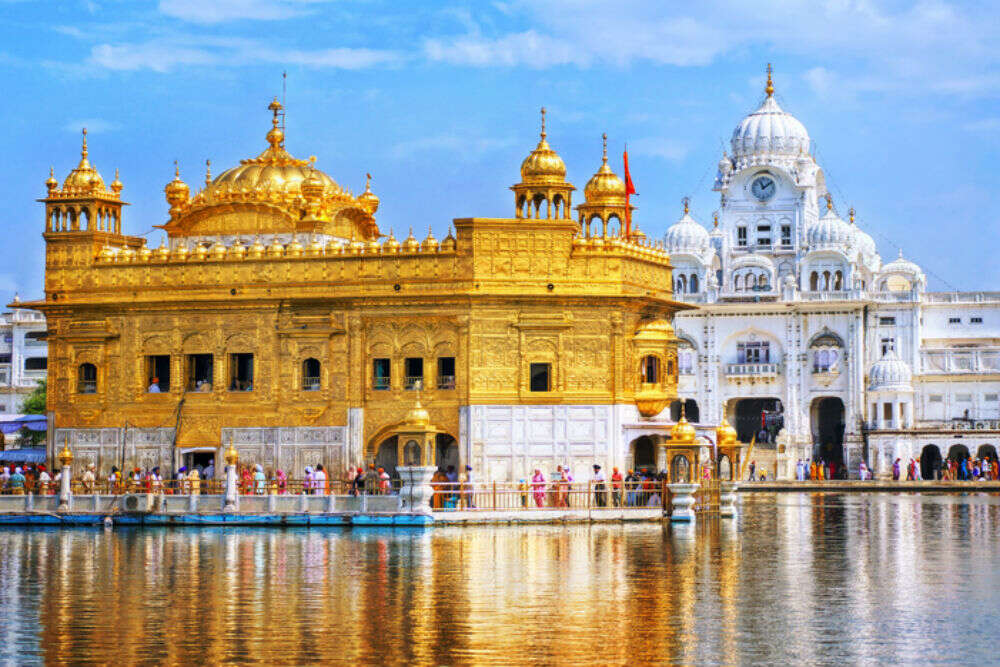
generic viagra
7 Jan 2021Thank you for every one of your hard work on this web page. My aunt really loves making time for investigations and it’s really obvious why. Most of us learn all of the lively mode you offer priceless suggestions through this web site and even increase participation from some other people on the matter so our favorite girl is now starting to learn a lot of things. Take advantage of the rest of the year. You are always doing a remarkable job.
sinequan doxepin
9 Jan 2021I simply needed to thank you so much once again. I am not sure the things that I would’ve made to happen without the type of opinions documented by you directly on such a industry. It had been a very fearsome difficulty in my circumstances, however , finding out the skilled manner you managed that made me to jump over fulfillment. I am happier for this help and even hope you find out what a great job you are doing instructing other individuals through the use of your site. I know that you have never encountered all of us.